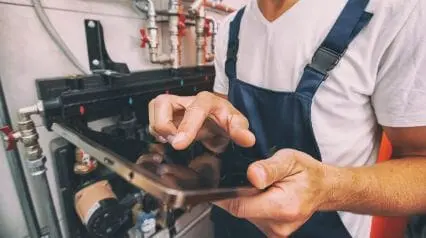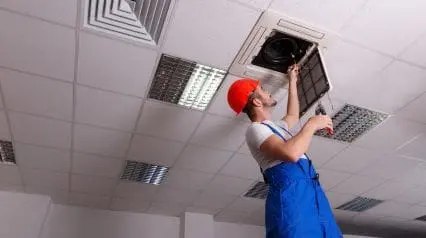What are the Types of Maintenance?
Maintenance in the workplace refers to the process of ensuring a certain equipment, machine, item, or facility is in good and working order before and after use. It comes in different types, namely preventive maintenance, corrective maintenance, condition-based maintenance, planned maintenance, predictive maintenance, risk-based maintenance, reliability-centered maintenance, and proactive maintenance.
What is the Main Purpose of Maintenance?
The main goal and purpose of maintenance is to keep all equipment, machine, and systems working at their best at all times. To achieve this, it is important to avoid unnecessary downtime, replacements, and breakdowns as much as possible.
Another purpose of performing maintenance is to ensure a safe working environment. Broken assets can lead to potential hazards that can, directly and indirectly, harm you and your workers, and sometimes even customers. In extreme cases, equipment failure can lead to accidents that cause injuries or fatalities.
In addition to safety concerns, another purpose of maintenance is to prevent unnecessary costs. Repairs and replacements can be much more expensive than conducting maintenance, and downtime can lead to lost revenue and decreased productivity. Neglecting maintenance can also result in equipment or infrastructure reaching the end of its useful life much sooner than expected, possibly causing unplanned expenses.
Types of Maintenance
Maintenance tasks can be categorized into the following types:
Preventive Maintenance
Preventive maintenance focuses on addressing issues before they manifest. It involves regularly checking and servicing equipment, systems, facilities, and the like to ensure they do not break down suddenly. While this is often done before use, it can also be performed after.
This is one of the most used example of maintenance as it is present in manufacturing, construction, hospitality, and transportation.
Corrective Maintenance
While preventive maintenance is often done before using a certain equipment or system, corrective maintenance is usually done after use. Sometimes called “reactive maintenance,” type of maintenance involves technicians correcting malfunctions and addressing breakages in equipment, different types of machinery, and systems.
Condition-based Maintenance
This type of maintenance involves conducting maintenance tasks depending on the condition of the asset to be used. With condition-based maintenance, there is no set schedule to follow, as maintenance professionals will be basing their actions on indicators that will determine if an equipment, machine, or system will be breaking or has already broken.
Planned Maintenance
The opposite of condition-based maintenance is planned maintenance. This type of maintenance involves scheduling maintenance checks and tasks regardless of the current status of the assets to be used, ensuring that they are in good condition at all times.
Predictive Maintenance
Similar to preventive maintenance, predictive maintenance is often conducted before certain equipment is used. With this type of maintenance, data from sensors, machine learning systems, monitors and the like are used to predict the best time and way to conduct maintenance in the most efficient way possible.
Risk-based Maintenance
This type of maintenance focuses on risks and utilizes risk assessment principles to improve how certain maintenance tasks are performed and how different resources are allocated. Risk-based maintenance involves analyzing a machine, equipment, or system’s possibility for breakage, failure modes, and causing harm, which will then serve as the basis for managers to create a maintenance plan that will mitigate these.
Reliability-centered Maintenance
Reliability-centered maintenance is most often used in corporate settings. This type of maintenance is designed to improve and optimize maintenance programs based on established safe levels of work and equipment use, all while staying cost-effective.
Proactive Maintenance
Proactive maintenance is a type of maintenance strategy focused on determining the root cause of breakdowns and failures and addressing them before they can cause more problems. It works similarly to preventive maintenance as they both aim to address problems before they happen or get worse, but the frequency of proactive maintenance is subject to change often.




